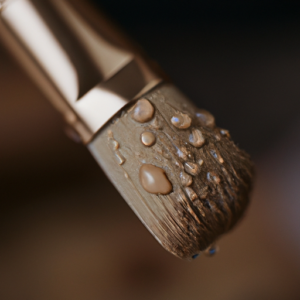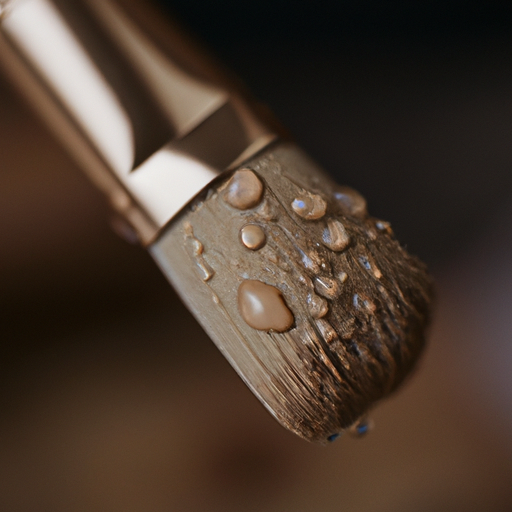Hide Acne like a Pro: Tips for Flawless Makeup Application
Hey there! If you’re like me, you know how frustrating it is to wake up to a fresh batch of pimples on your face. And when you have an important event or date, covering them up becomes a top priority. But it’s not just about slapping on some foundation and hoping for the best – there’s an art to it. In this post, I’m going to give you some expert advice on how to hide your acne like a pro.
Firstly, let’s define what we mean by “acne”. Acne is a skin condition that affects a lot of people and can cause pimples, blackheads, and whiteheads to appear on the face, chest, and back. Sometimes, acne can be severe and leave scars on the skin. And while we should always embrace and love our natural selves, there’s no shame in wanting to cover up those pimples from time to time to boost our confidence.
So, why cover up pimples? Well, for many people, acne can cause them to feel self-conscious, and covering up their pimples with makeup can help to boost their confidence. It can also help to create a more even skin tone and make them feel more comfortable in their skin.
Choosing the Right Makeup – My Expert Advice
Okay, so you’ve got some pesky pimples you want to cover up. The first step is to choose the right makeup. But where do you even start? Let me give you some expert advice on selecting the perfect foundation, concealer, and powder.
First up, foundation. When covering pimples, it’s important to choose a formula that provides enough coverage without looking too heavy or cakey on your skin. Look for a foundation that is labeled “medium coverage,” as this will give you enough coverage without looking too thick on your face. You also want to choose a foundation that matches your skin tone as closely as possible, so be sure to test shades in natural light before purchasing.
Next, concealer. Concealer is your best friend when it comes to covering up pimples. Look for a formula that is creamy and blendable, as you don’t want it to look dry or patchy on top of your blemishes. Again, be sure to choose a shade that matches your skin tone as closely as possible.

Lastly, powder. Powder is essential for setting your makeup and making sure it stays put all day. Look for a translucent or “invisible” powder, as this will help to set any makeup you apply without adding any additional color to your face.
How I Cover Pimples with Makeup: Application Techniques
Now that we’ve covered the importance of choosing the right makeup for covering up pimples, let’s move on to the application techniques that have worked for me.
Cleansing the skin
Before applying any makeup, I make sure to cleanse my skin thoroughly to avoid any breakouts. I use a gentle cleanser and pat dry my face with a clean towel.
Applying a primer
I always apply a primer before foundation and concealer to ensure my makeup lasts all day. A lightweight, oil-free primer works best for my oily skin.
Blending foundation and concealer
When applying foundation, I use a damp beauty blender to blend it into my skin. For concealer, I use a small brush to apply it over the pimple and blend it out. I also use a shade that matches my skin tone to avoid any harsh lines.
Setting with powder
To set my makeup and prevent any creasing or caking, I use a translucent powder. I gently apply it all over my face with a big fluffy brush and concentrate on the areas with pimples to keep them looking smooth and covered.
Remember, it’s important not to overdo it with makeup when covering up pimples. Avoid heavy contouring as it can draw attention to the pimple rather than conceal it. Additionally, adjust your coverage as needed, as layering too much makeup can make your skin look cakey. For more expert tips on choosing the best makeup for pimples, check out https://besteyelashextensionsupplies.com/the-best-makeup-for-pimples/.
Final Tips: Don’t Cake On The Makeup Ultimate Guide
Hey there, it’s time for some final tips on how to cover up those pesky pimples! One thing to keep in mind is to avoid cakey makeup. This can happen when you apply too many thick layers of foundation and powder. It’s better to start with a thin layer and build up coverage as needed.
Another tip is to adjust your coverage as needed throughout the day. As your skin changes and your makeup settles, you may need to touch up or add more coverage. This is completely normal! Just be mindful of not adding too much and making your skin look unnatural.
When it comes to contouring, it’s best to avoid heavy contouring when you have pimples. The added layers of makeup can make your skin look worse and draw attention to the blemishes.
To avoid looking too cakey, it’s essential to pay attention to the products you’re using. Opt for lighter foundations and concealers that are less likely to clog pores. Additionally, be sure to properly cleanse your skin before applying any makeup, and use a primer to help create a smooth base.
Overall, the key to successful pimple covering is to use the right products and techniques while being mindful of how your skin is reacting. Keep these tips in mind and you’ll be on your way to a flawless complexion in no time!
Wrapping It Up
Well folks, that’s all the tips I have for you on covering up pimples with makeup. Overall, it’s important to choose the right makeup and application techniques to avoid a cakey or unnatural look. Remember to begin with clean, moisturized skin and use a primer to help the makeup stay in place. When choosing foundation and concealer, look for products with acne-fighting ingredients like salicylic acid. Use a light hand when applying, and blend well to avoid harsh lines or streaks. Set everything with a light dusting of powder.If you’re worried about your makeup looking too heavy, try starting with a lighter coverage and adding more as needed. And as tempting as it may be, avoid heavy contouring, which can accentuate any uneven texture on your skin.Ultimately, the goal is to feel confident and comfortable in your own skin, whether you choose to wear makeup or not. By using the right products and techniques, you can achieve a natural-looking finish and cover up any blemishes that you’d rather keep out of the spotlight.
